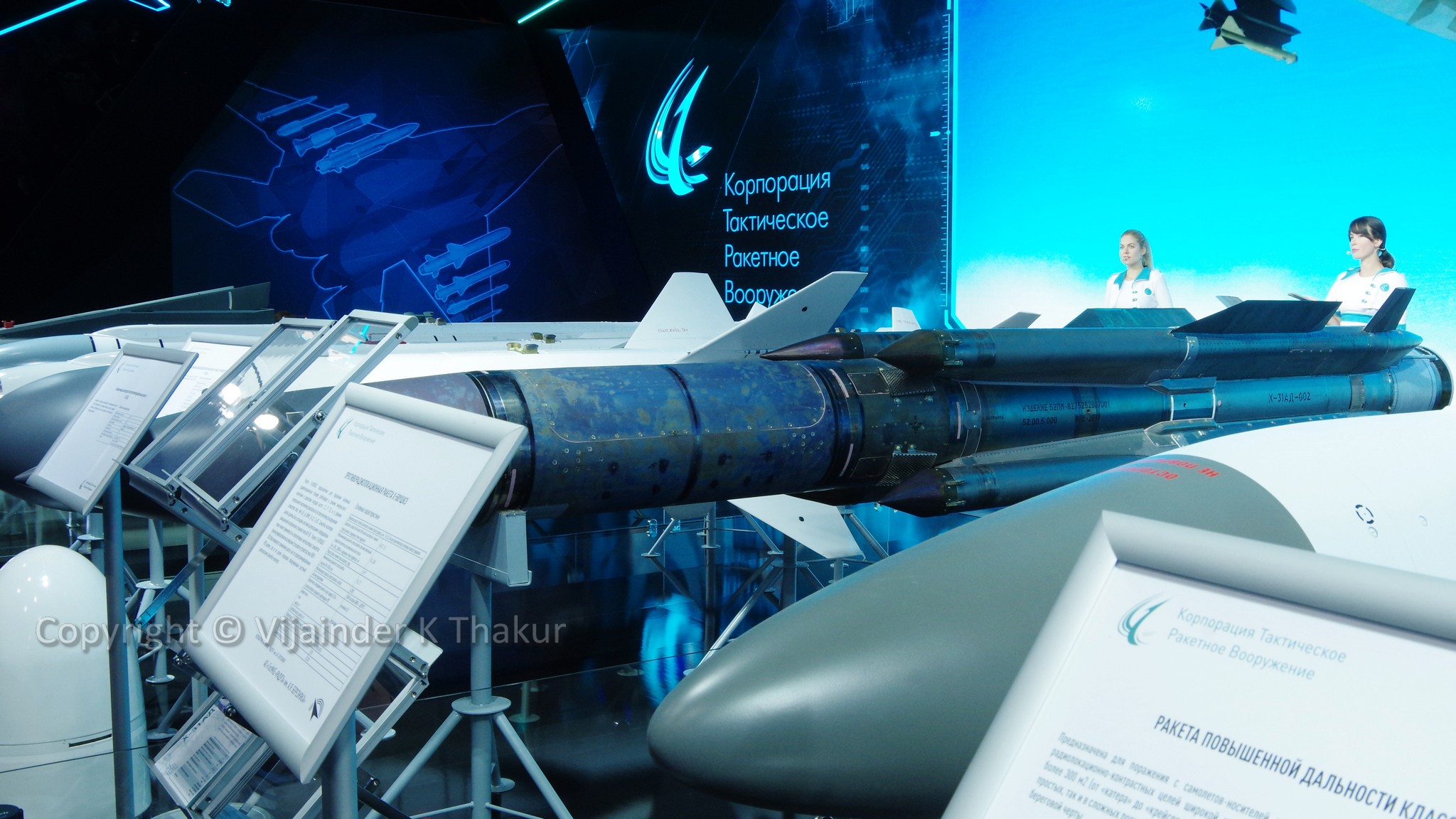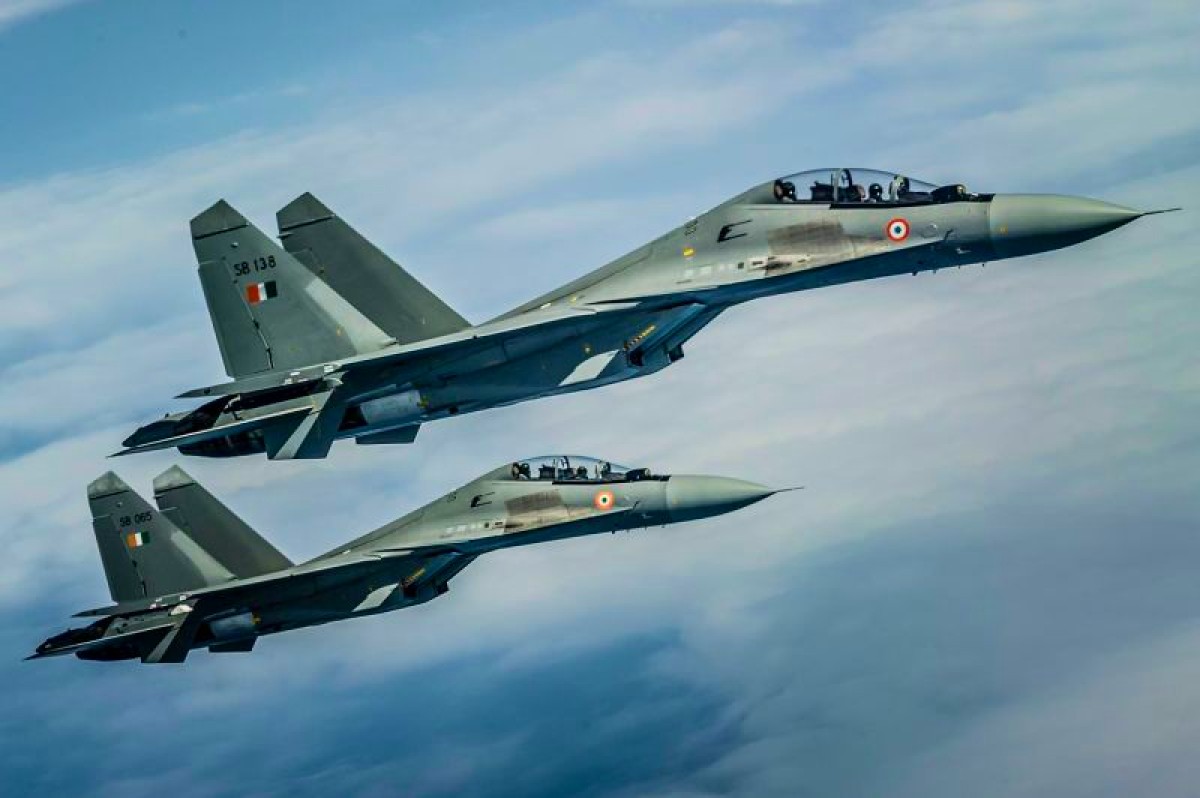The reportedly excellent performance of the Kh-31 missile during the ongoing Russian offensive is sure to bring cheer to the Indian military leadership. The missile is used by both the Indian Air Force (IAF) and the Indian Navy (IN).
A source in the Russian military-industrial complex told TASS, “Several dozen anti-radar missiles produced by KTRV were used to strike targets of the Armed Forces of Ukraine.
Almost all of them successfully hit the targets,” he said, without specifying the index of the product. RuMoD has, on several occasions, released videos of Su-35 and Su-30SM fighters equipped with the Kh-31PD missile.
Russian pilots refer to the Kh-31 as “Supersonic Death,” contending that the missile is practically invulnerable to enemy anti-aircraft defenses due to its high speed and counter-attack abilities.
Propulsion
The missile is powered by a solid fuel rocket (SFR) and ramjet propulsion system. The SFR provides initial acceleration. After burnout, a kerosene ramjet that uses the empty rocket motor casing as a combustion chamber is ignited. The 600-kilogram missile has a cruise speed of 2,160–2,520 km/h.

Guidance & Homing
The missile comes in two configurations – Kh-31A and Kh-31P.
The Kh-31A (Active) is the Anti-shipping Cruise Missile (ASCM) configuration in which the missile navigates to the target area using inertial guidance.
In the vicinity of the target, it switches on its powerful ARGSN-31 jam-resistant active radar homing seeker that can easily discern its target despite the low contrast of the sea surface. The missile is designed to engage ships displacing up to 4,500 tons.
The Kh-31P is the Anti-radiation missile (ARM) configuration honed to strike active (radiating) adversary radars. In this configuration, the missile uses a passive seeker to operate in several homing modes, including automatic search and external control.
The broadband seeker covers the entire range of current and predicted operating frequencies for potential enemy air defense systems.
If illuminated by an adversary radar, the missile can perform an evasive 10-g pull-up maneuver to break the lock.
The Kh-31P is designed to destroy medium- and long-range SAM systems’ radars, air operations control radars, and early warning radars.

Variants
Russia has developed a more lethal (heavier warhead) missile variant. It was first displayed at MAKS 2019 in ASCM configuration as Kh-31AD. The variant was developed to destroy Landing Ships.
The ARM variant of the missile, which is being used in the SMO, is Kh-31PD.
D-Variant Specifications
|
Range (km) |
160 |
|
Max flight speed (m/s) |
1000 |
|
Launch/warhead weight (kg) |
715 / 110 |
|
Field of target search, acquisition & tracking (deg) |
30 x 54 |
|
Launch platforms |
Su & MiG type fighters |
|
Operational altitude envelope (m) |
100 – 15000 |
|
Employment weather conditions |
Day and night with sea state up to 5 |
|
Dimensions length/dia./wingspan (m) |
5.340 x 0.360 x 0.954 |
Kh-31 Specifications
|
Range (km) |
|
|
Max |
110 |
|
Min |
15 |
|
Max flight speed (m/s) |
1000 |
|
Launch/warhead weight (kg) |
600 / 87±2.5 |
|
Carrier speed range (kph) |
600-1250 |
|
Operational altitude envelope (m) |
100 – 15000 |
|
Hit probability |
0.7 – 0.99 |
|
Dimensions length/dia./wingspan (m) |
4.7 x 0.36 x 0.914 |
Kh-31 Vs. HARM
The Kh-31 is a much bigger missile than the American AGM-88 HARM. The 110-kilogram warhead on the D variant is substantially heavier than the 68-kilogram warhead of the HARM.
Its 1000 m/s speed is much higher than the 600 m/s speed of HARM, giving the D variant much higher momentum when striking a target. As such, the devastation caused by the Kh-31 would substantially exceed the devastation caused by HARM.
The AGM-88E variant of the American missile is otherwise a smarter missile than the Kh-31. It is more difficult to evade than the Kh-31. If an adversary switches off the SAM radar, the AGM-88E is not blinded; it remembers where the adversary radar is and uses its own high-resolution (millimeter wave) radar to “see” the target radar.

Procurement By India
In 2001, India was reported to have bought Kh-31s for its Su-30MKI, including 60 Kh-31A and 90 Kh-31P.
In July 2019, Sputnik News reported that India procured additional Kh-31 missiles. It is likely a reference to the more lethal D variant.
- Vijainder K Thakur is a retired IAF Jaguar pilot. He is also an author, software architect, entrepreneur, and military analyst. Views expressed here are of the author’s.
- Reach out to the author at vkthakur (at) gmail.com
- Follow EurAsian Times on Google News




